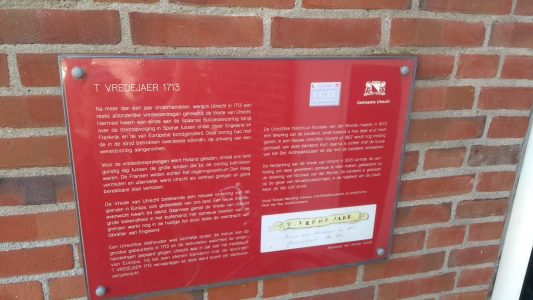‘T Vredejaer 1713
After negotiating for over a year, a series of separate peace treaties were signed in Utrecht in 1713: the Peace of Utrecht. This brought the War of the Spanish Succession to an end (battle over the succession to the throne in Spain between, among others, England and France and numerous European allies). This war, with overseas colonies involved in battle, had taken on the magnitude of a world war.
Holland was chosen to deescalate the situation because our country was conveniently located between the major countries involved in the war. However, the French wanted to avoid the government center of The Hague, thus choising Utrecht as a centrally located and easily accessible city.
The Treaty of Utrecht entailed a new arrangement of borders in Europe, including part of our country. A new balance of power was established. As a result, the Treaty of Utrecht enjoys great fame abroad. The re-drawing of the borders continues to this day, such as the transfer of Gibraltar to England.
A stable owner from Utrecht was apparently impressed by the great event in 1713 and the festivities that accompanied the negotiations. In that year, Utrecht was the center of Europe. He had a stone banderole with the words ‘T VREDEJAER 1713’ made and placed above his stable doors.
The Utrecht historian Nicolaas van der Monde made a drawing of the banderole in 1840, so that we may get a glimpse of what it looked like. This banderole is still mentioned in a Nieuwe Utrechtse Courant from 1867. Shortly afterwards, however, with the construction of the Sint Andreasklooster, the stable with the banderole disappeared.
The commemoration of the Treaty of Utrecht in 2013 was the reason to have this facade stone recreated, based on the drawing by Nicolaas van der Monde. The banderole is placed on the facade of new homes, in the vicinity of the place where the stable once stood.
Studio Richard Wending: design, script sculpture and polychromy
Karel van Roy: Sculpture.
The Year of Peace 1713

